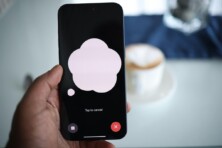The CFPB revealed its recent research which helped the institution create a typical image of a BNPL borrower, who uses the option without signs of stress, but tends to be highly indebted

Image: unsplash
A new report from the Consumer Financial Protection Bureau (CFPB) titled “Consumer Use of Buy Now, Pay Later Insights from the CFPB Making Ends Meet Survey,” says that “a majority of BNPL borrowers would face 19%-23% annual credit card interest rates if they did not resort to Buy Now Pay Later credit options.
The survey of US consumers discovered that typical BNPL borrowers
- were much more likely to be highly indebted,
- had higher credit card and other traditional loan utilization rates,
- were credit card revolvers,
- had lower credit scores,
- had delinquencies in traditional credit products,
- used high-interest financial services such as payday, pawn, and overdraft more often than non-BNPL borrowers,
- generally had access to traditional forms of credit.
Although many BNPL users use the short-time pay-in-four installment financing option without signs of stress, they have lower liquidity and fewer savings options on average compared to consumers who don’t use BNPL.
Approximately same percentage of BNPL users and non-users (25%) have zero credit card liquidity. However, 6% of BNPL users have credit card negative liquidity compared to 3% of non-users, indicating particularly high levels of indebtedness among these consumers.
Besides, BNPL consumers display higher utilization rates of high-interest alternative financial services. Further 69% of BNPL borrowers are revolving on at least one credit card, carrying over a credit card balance from one billing cycle to the next.
Despite having access to traditional forms of credit, typical BNPL borrowers found installment options more advantageous, particularly when they had less than prime credit. As a rule, BNPL borrowers saw their credit scores in the sub-prime category (580-669).
As for the demographics, BNPL is most prevalent credit option among consumers with annual income between $20,000 – $50,000. The BNPL solutions are typically more common among the traditionally underprivileged social groups, showing a clear financial inclusion gap still exist.
- Women use BNPL more frequently than men (20% vs 14%),
- Black (26%) and Hispanic (24%) consumers make BNPL purchases more often than white (16%) buyers,
- Consumers aged 65+ use BNPL rarely (10%) compared to those under 35 (22%).
The situation is not the same in the UK, where BNPL demand rose across all age groups, with almost 20% of over-65-year-olds using short-term loan products or intended to do so in the next 12 months.









